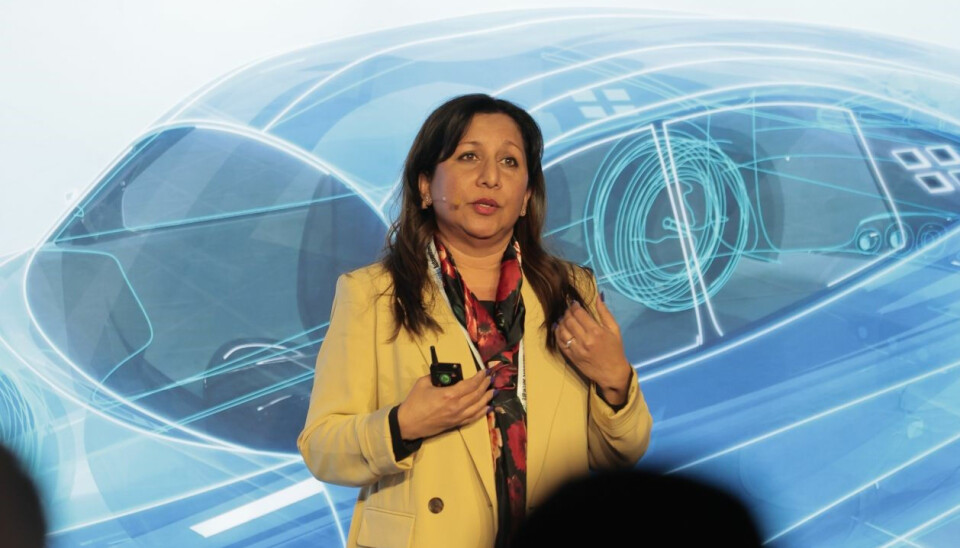Aligning safety, reliability, and AI integration
Why interoperability matters in automotive functional safety
Jyotika Athavale on stage in Detroit.
Ultima Media Germany
AI-driven vehicles demand more than just fault tolerance or diagnostic checks. They require interoperability: between layers, between domains, and across lifecycles. At the Automotive Computing Conference 2025, Jyotika Athavale, Director at IEEE and Synopsys, made a clear case for embedding interoperability into the DNA of automotive systems.
Athavale began by mapping the evolving terrain of semiconductor reliability. As chips become denser and more powerful—with FinFETs giving way to gate-all-around (GAA) transistors and even more exotic structures—their susceptibility to failure rises. She highlighted a range of mechanisms: from electromigration to die warping, from contact instability to thermal degradation.
The challenge is compounded by increasing compute demands, AI workloads, and the rise of always-on automotive applications like robotaxis. While a traditional car might be expected to run 8,000 hours over 15 years, a robo-fleet vehicle may run 24/7, radically altering mission profiles and accelerating wear. Athavale noted: “The tables have turned. Today we must design for the automotive case first—then adapt for everything else.
Dependability lifecycle
The central thesis of Athavale’s talk revolved around the IEEE P2851 standard, a framework for functional safety interoperability across application domains like automotive, industrial, and medical systems.
The standard defines a "dependability lifecycle", addressing technologies like reliability, availability, maintainability, cybersecurity, and real-time behaviour—all under the umbrella of functional safety. Within this framework, interoperability is tackled on three levels:
- Across system hierarchies - From IP to SoC to system to vehicle.
- Across engineering disciplines - Balancing performance, safety, security, and reliability trade-offs at every stage.
- Across application domains - Enabling reusable work products between automotive, avionics, and other sectors.
The goal is to avoid designing in silos, and instead align safety analysis across technologies and tools from the outset.
Silicon Lifecycle Management
Athavale then introduced a key building block for safe, long-living AI systems: Silicon Lifecycle Management (SLM). Rather than treating chips as black boxes, SLM enables them to monitor their own health—from manufacturing to in-field operation.
Using embedded sensors and monitors for parameters like voltage margins, clock delays, and thermal shifts, SLM systems can detect degradation before faults turn into failures. This supports predictive maintenance, where failures can be anticipated and mitigated early.
According to Athavale, the data pipeline spans from on-chip monitors to edge controllers, and then to analytics platforms. Corrective actions might include voltage scaling, thermal control, or reallocating compute loads—all contributing to longer device lifespans and enhanced functional safety.
Another insight from Athavale’s session was the impact of AI-specific workloads on system reliability. She cited a Meta study showing that over 50% of failures in large AI clusters were tied to GPUs, with significantly higher soft error rates than traditional compute tasks.
In automotive contexts, where edge AI is rapidly gaining traction, this finding has serious implications. It reinforces the need for new safety metrics, and for integrating AI fault behaviour into safety analysis. SLM, she argued, can elevate SPFM (Single Point Fault Metric) and improve PMHF (Probabilistic Metric for Hardware Failures) by providing real-world degradation data—not just assumptions.
Interoperability between safety analysis, reliability models, and in-field data
A particularly forward-looking concept in Athavale’s talk was Remaining Useful Life (RUL) prediction. By monitoring degradation trends in real time, SLM enables systems to estimate how long a component can be expected to function safely.
This approach is now being formalised through ISO and IEEE standards. According to Athavale, it has practical implications: instead of replacing components based on mileage or time, vehicles could optimise service schedules based on actual silicon health—saving costs and boosting uptime.
She concluded with a simple but powerful analogy: “We can no longer afford to operate blind.” As AI becomes pervasive, safety must be built in from the substrate up. That means interoperability between safety analysis, reliability models, and in-field data, all powered by active monitoring and smart design.
































